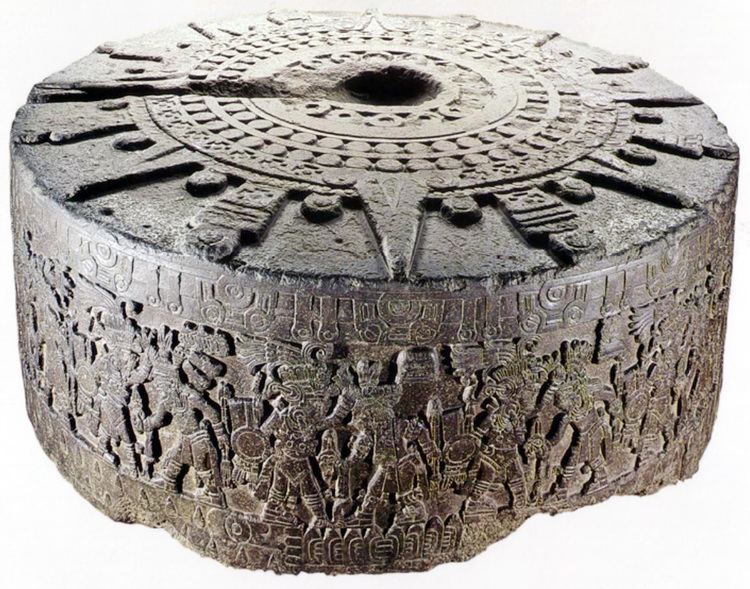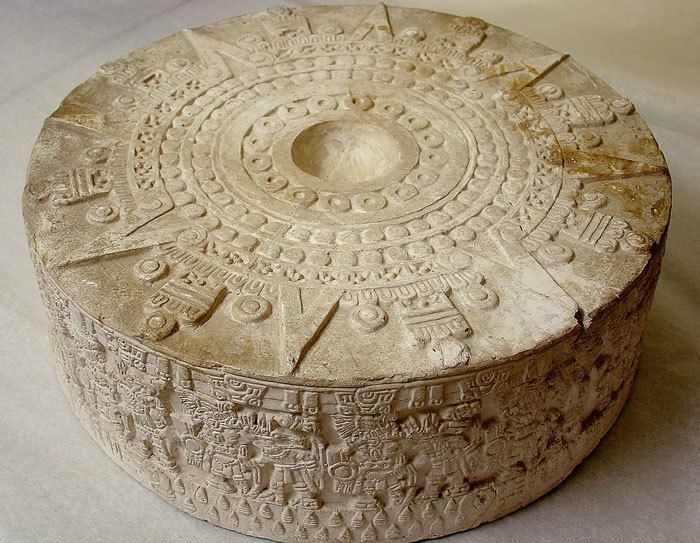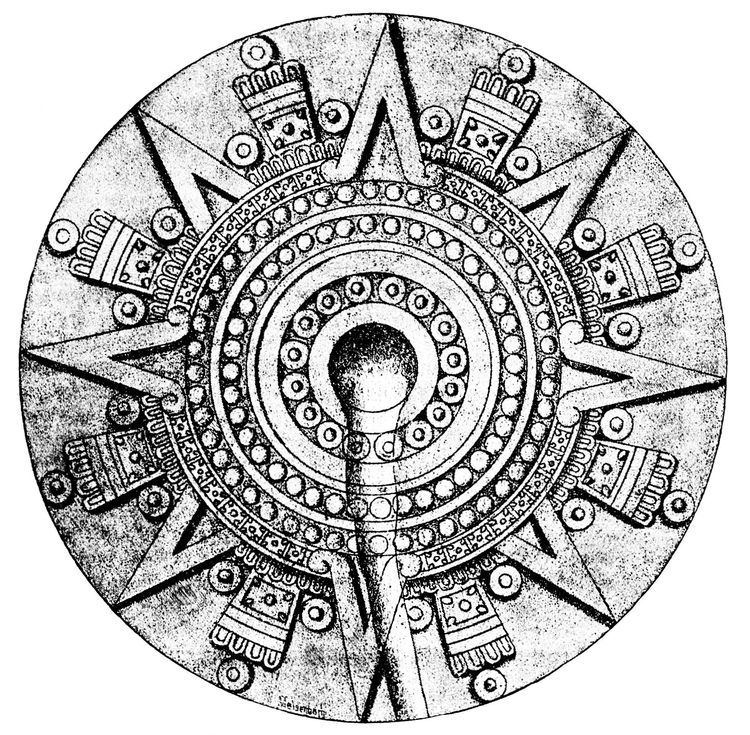Discovered 17 December 1791 | Created 1480s | |
 | ||
Present location National Museum of Anthropology Similar Aztec calendar stone, Coatlicue statue, Double‑headed serpent, Montezuma's headdress, Olmec colossal heads | ||
The Stone of Tizoc, Tizoc Stone or Sacrificial Stone is a large, round, carved Aztec stone. It is thought to have been a Cuauhxicalli, in which the hearts of victims of sacrifice were placed. Richard Townsend maintains, however, that the stone was hollowed in the 16th century for unknown purposes.

The stone was rediscovered on 17 December 1791 when construction was being done in downtown Mexico City. The workmen had been breaking up monuments that were found and using them as cobblestone. A churchman named Gamboa happened to be passing by and saved the stone from the same result. The stone was then moved to the cemetery of the nearby Cathedral where it stayed until 1824, when it was moved to the University. The stone is currently in the National Museum of Anthropology in Mexico City.

The monolith is made of basalt and measures 0.88 meters deep by 2.67 meters wide.
The stone depicts Tezcatlipoca, a major Aztec god, holding the patron gods of other places by the hair. Aztec glyphs give the name of the original site, which may have already been conquered, or was considered divinely ordained to be conquered. The toponyms are written in a mixture of logographic and syllabic signs. One of the figures, however, is identified as Tizoc, the Aztec Emperor from 1481 to 1486, who is dressed in the costume of the god Huitzilopochtli (wearing a hummingbird headdress characteristic of that deity) and named with his name glyph. This has led to the stone's association with Tizoc. The stone also depicts the stars at the top rim, emphasizing the heavens; triangular points at the bottom edge represent the earth. On the top side of the stone, there is an elaborately carved sun dial with eight triangular rays, representing the cardinal directions. The warriors carved into the stone are holding the hair of their enemies gods, a gesture which represented submission and defeat in the Aztec culture.

Additionally, the relief may function as a symbolic manifestation of a ritual act. In relation to Mexica tradition, those conquered were expected to send sacrificial offerings to the victor, Tizoc. Here, then, Townsend sees the stone as acknowledgement of such a transaction.

The Stone of Tizoc may have been used as a means of sacrifice or for the use of mock battles between a group of warriors and the victim, who was tied to the stone and given a feathery club while the warriors had sharp swords or clubs. The importance of the Stone of Tizoc is that it was used during the human sacrifices, which Tizoc the emperor wanted glorified through his name. In addition, the emperor of the Aztecs would tend to conceive his children on this rock, soaking in the blood of his enemies. In this depiction of him, Tizoc can be assumed to be the inheritor of the Aztec empire.
Tizoc became the seventh emperor of the Tenochtitlán empire after his brother, Axayacatl, died in 1481. The Stone depicts Tizoc's image all over the stone; this was a way to glorify Tizoc's reign despite the many failed battles and military strategies. The Stone of Tizoc has become a staple of Aztec history along with the Aztec Calendar Stone. The Aztec sacrifice was held at the top of temples on specially chosen mountains such as Tenochtitlan, Texcoco, and Tlacopan in which priests had the victims tied to a large, flat stone and then proceeded to cut their hearts out, lifting it up to the sun as an offering. The bodies were either thrown down the temple stairs or the heads were impaled on a rack, also known as a tzompantli.
Sacrifices had begun in the Aztec culture as a form of worship to the gods that demanded payment for creating humanity. The capital of the Aztecs, Tenochtitlan, held thousands of sacrifices which involved men, women, and children. Estimates of sacrifices have ranged from 15,000 annually in Tenochtitlan and 250,000 in Central Mexico by Michael Harner to 60,000 or less by Bernard Ortiz de Montellano.
Sacrifices were held to honor the gods such as: Huitzilopochtli, the god of sacrifice and war, Tlaloc, the god of rain and fertility, Tezcatlipoca, the chief god of the Aztecs, and Quetzalcoatl, the god of education, priesthood, and civilization.
